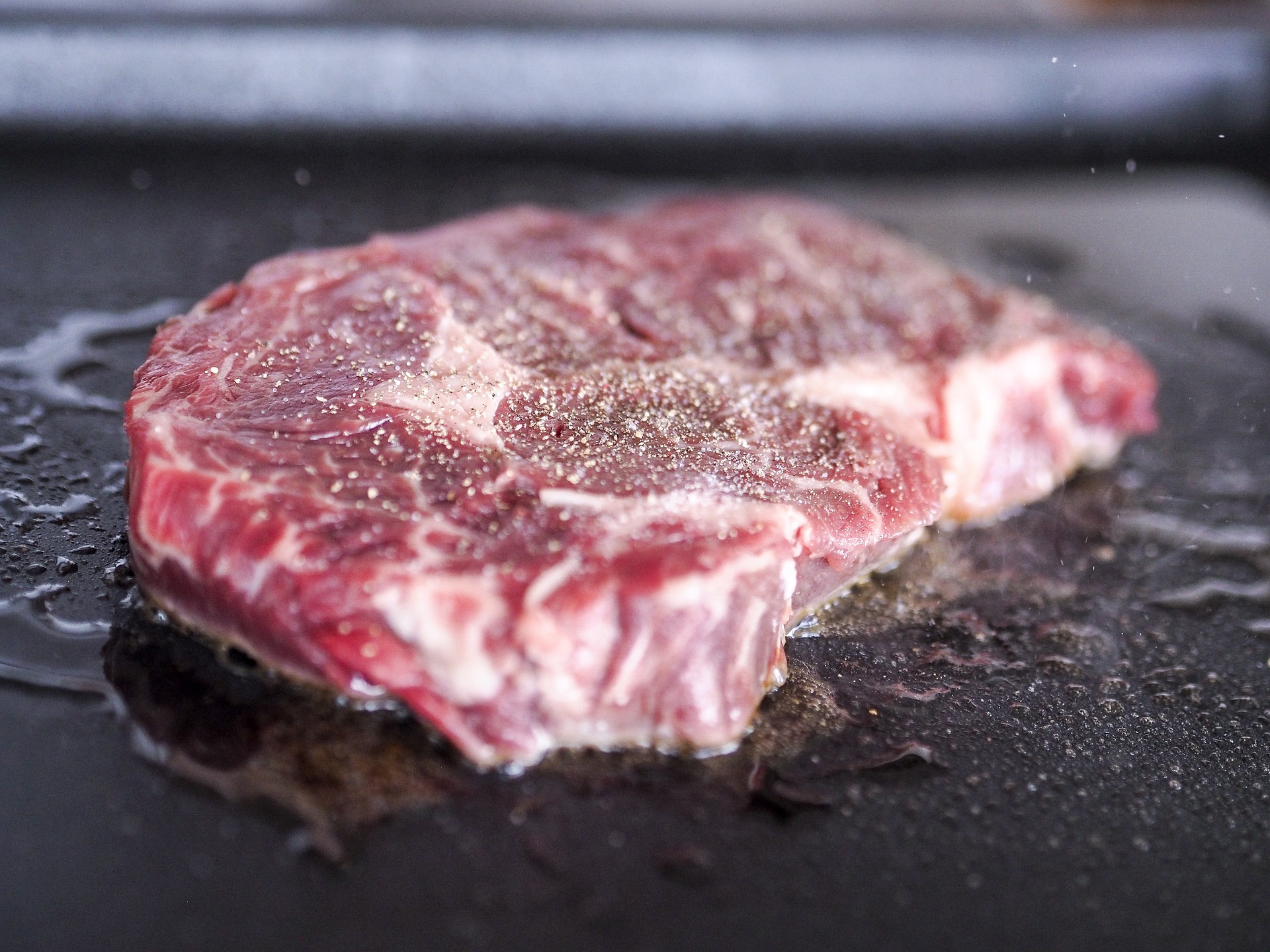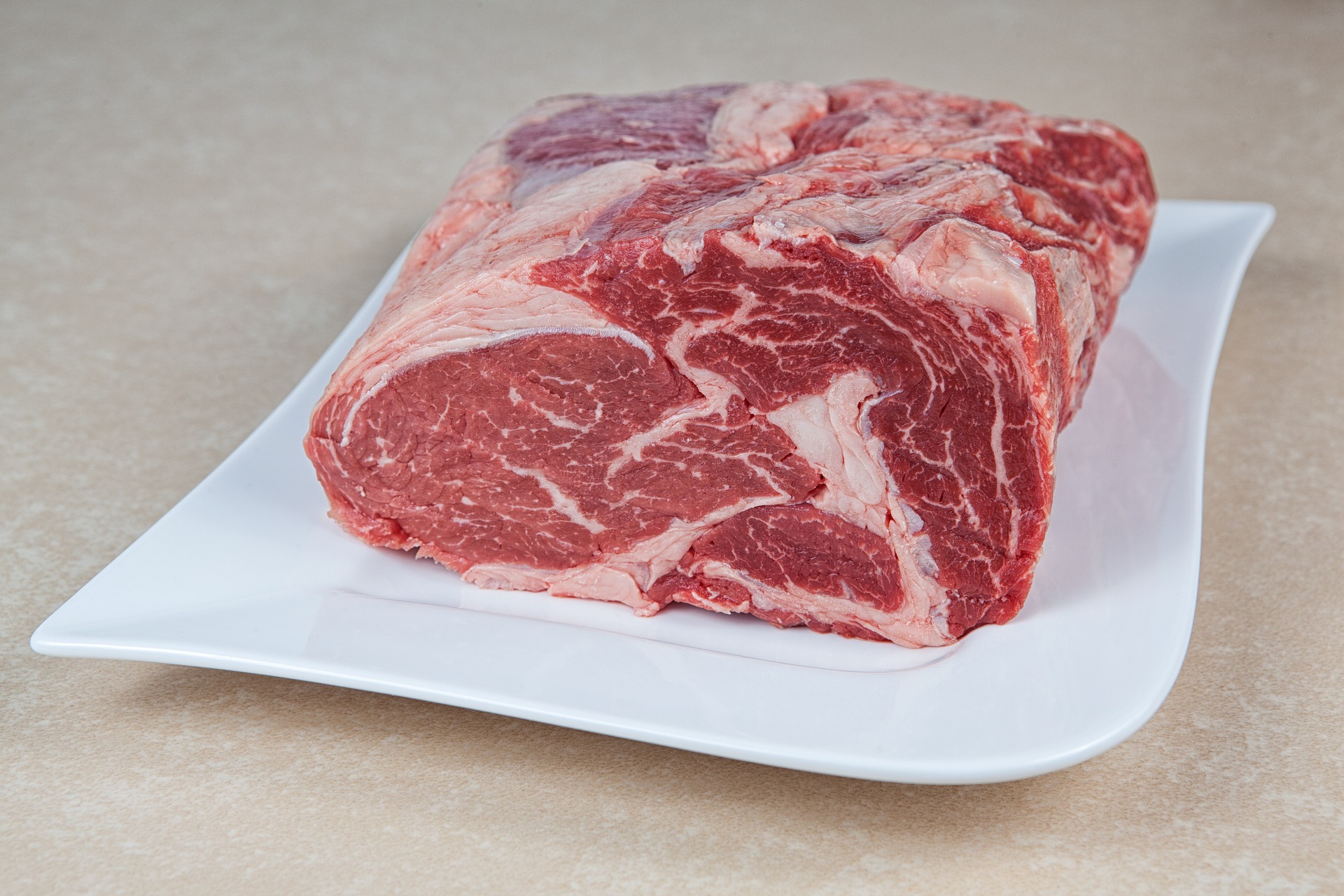Normally, serving an extra taco or two of the casserole wouldn’t be a huge thing. You already prepare enough for leftovers night.
However, you had intended to prepare steaks tonight along with grilled vegetables. As a result, there is only one issue: time is running out, and you are missing one Steak.
You still have time to get the beef on the grill if you know how to defrost Steak quickly. This foolproof technique for thawing steaks has saved dinner.

How to Defrost Steak Fast?
Take a steak out of your supply and put it in a zip-top bag. Seal the bag after removing as much air as you can.
The meat should be put in a big bowl. Giving each Steak its bowl will help you finish the process faster if you’re thawing multiple steaks. Cool water should fill the bowls, not hot or warm water. The most secure is cool water. The danger zone, or the point at which bacterial growth accelerates, is reached when the temperature rises.
Submerge the Steak for 30 minutes in the water. To keep the meat immersed, place a spatula or wooden spoon on top of it. Check the Steak at the end of that interval. If it hasn’t fully defrosted, drain the water and replace it with cool, fresh water in the bowls. You don’t need to be concerned about the meat becoming discolored because the water isn’t hot enough to begin the cooking process.
Per pound of beef, allow 30 minutes. In 30 minutes, thinner steaks will have thawed completely. Filets or ribeyes that are thicker may require extra time. When they are thawed enough to pry apart, you can expedite the process by removing individual portions from one another.
Take out the bag from the liquid. Remove the Steak by breaking the seal. As usual, season the meat and prepare it for cooking. It’s okay if the center continues to be a little icy. The meat can still be prepared. Just give it a couple more minutes to heat up.
Which Steak Fast Thawing Techniques should you Avoid?
Even though your microwave includes a defrost setting, it’s better to avoid using it to thaw frozen steaks. The heating element will defrost the meat, but it can also start cooking the Steak right away. The meat’s texture and color (which will turn grey) will be impacted by this (it could become chewy). Only use this approach as a very last option.
Do not, under any circumstances, leave the Steak out on the counter to warm up. Even cold spaces like the garage or basement are way too heated. The meat’s exterior will quickly warm up to the danger zone of 40°F to 140°F, and potentially harmful bacterial growth will begin. This might result in food poisoning.
According to some chefs, the unwrapped Steak should be placed in a water bowl with a steady stream of water flowing into it. This will undoubtedly aid in maintaining the water surrounding the Steak at a consistently cool temperature—and keep it from rising into the danger zone—but it also means that all the juices a steak naturally loses when thawing will be permanently lost. Ultimately, that can result in a piece of stringy and dry meat.
How to Freeze Steak?
The meat needs to be frozen as soon as you can. The best and easiest way to freeze a steak is to place it in a specific plastic bag, which you should then transfer to a vacuum sealer to seal. The Steak is then put in the freezer at the coldest setting possible as the final stage.
Are you lacking a vacuum sealer? The Steak should be carefully wrapped in plastic and a ziplock bag. Squeeze out as much air as you can before closing the bag. The Steak should be placed in the freezer as the last step.
The likelihood of freezer burn increases with the amount of air in the bag, which will negatively impact the quality of your steaks.
Make sure the bag you use has no holes to prevent freezer burn. Additionally, ensure your steaks are frozen consistently at a temperature as close to zero.
Any steak, whether it’s a ribeye steak, fillet mignon, or any other cut of beef, can be frozen using one of the techniques mentioned above.
What are the Different Types of Steak?
Filet Mignon
The Steak from the beef tenderloin, a long, cylindrical muscle that runs along the spine, is known as fillet mignon. Because the muscle doesn’t have to work very hard and is extremely sensitive, it is one of the most expensive cuts of cattle. Try serving the Steak with a rich sauce or butter instead of marinating it since it is already soft. A good example of this is the merlot fillet mignon.
Ribeye
The juiciest, most marbled Steak is a ribeye. It is marketed as a bone-in or boneless Steak and is sliced from the middle of the rib area. While slightly chewier than fillet mignon, ribeye has more flavor. Due to the abundance of intermuscular fat, this Steak is rather forgiving to cook; if you slightly overcook it, it will still taste juicy. Try prime rib, which is also sliced from the rib area, if you enjoy ribeye. Look for ribeyes with good marbling and a beautiful fat cap on the top when shopping.
Sirloin
These boneless steaks, also known as top sirloin, are occasionally cut from the sirloin region close to the animal’s back. Some claim that sirloin steaks are neither soft nor tasty, but we disagree; they have a pleasant beefy flavor and are reasonably priced, making them a good choice for weekday dinners.
How to Cook a Steak Correctly?
The flavor and texture of Steak will vary depending on the degree of cooking. The various degrees of “doneness” is typically a function of time rather than temperature. The cooking times shown here should only be considered general ideas because different steak cuts and thicknesses will require varying amounts of time to cook.
Although studies have shown that consuming Steak cooked to lower temperatures is still safe, keep in mind that the USDA recommends that all beef be cooked to an internal temperature of 145 degrees Fahrenheit for safe consumption. Always cook steaks at high degrees to seal the exterior and seal in the juices and taste.
All the cooking instructions below are for steaks one inch thick, which should almost always be cooked on a grill or in a skillet over high heat. Before eating, let your steak rest in an aluminum wrap for five minutes. This allows the meat’s liquids to be reabsorbed, making the beef cut more flavorful.
Rare
Rare steaks are prepared so that the interior is still bleeding. The inner margins should be light brown, fading to pink with a deep red core. This is a level above blue. A rare steak will most likely have a chilly or barely heated center.
For a steak, one inch thick, fry it in a pan for three minutes on one side and two minutes on the other. Let the steak rest for about five minutes before serving.
Medium Rare
Professional chefs almost often recommend serving their meat medium-rare if you ask them how they would like their Steak prepared. Steaks that are medium rare are only slightly red.
Cook the Steak on high heat for four minutes on one side and three minutes on the other until it is medium-rare.
Medium
When sharing a steak with those who have diverse tastes, a medium-rare steak is an ideal option. It should have a small to medium-sized pink and warm center and no red or cool regions. Typically, medium steaks will have some charring on the top and bottom, but not enough to overpower the flavor of the entire beef cut.
On high heat, a steak can be cooked to medium rare for five minutes on one side and four minutes on the other.
How to Tell Steak has Gone Bad?
Smell
The fragrance can help you determine whether your Steak has gone bad quickly and easily. This scent is highly noticeable and can be described as having an ammonia-like aroma.
You should detect this offensive odor right away. It will differ considerably from the fragrance of typical, untouched raw meat. The meat needs to be thrown out if you detect this odor.
Also, be sure to get rid of it right away. You don’t want it to leave a bad smell in the house or your refrigerator!
Slimy Texture
If the meat has become slimy, that is an obvious sign that the Steak has gone bad. You can tell this by its outward appearance (meat will have a slime film on it) or by touching it directly.
Try tracing your finger along the meat if your Steak doesn’t seem slimy. If the Steak is slimy, you’ll know right quickly. You absolutely shouldn’t consume it if it is.
Mold will soon start to grow, so this is just the beginning. As a result, the meat is infected.
Dry Steak
Raw Steak should be wet, which is generally a sign of health. However, the Steak is no longer fit for consumption if it looks and feels dry.
It’s crucial to remember that cooking and consuming dry Steak won’t necessarily be harmful to you in any manner. Consider dry-aged beef; after being kept in a refrigerator for weeks, the flesh is still edible.
Instead, it will remove all texture and flavor, leaving the outcome unappealing.
You should prepare a steak that is still juicy and avoid cooking one that has become dry.
What are the Side Effects of Consuming Bad Steak?
Nothing beats Steak when commemorating important events or satisfying a need for a hearty supper. While these meals might readily satisfy your cravings, you have probably heard that you shouldn’t overindulge in them. Steaks and other types of red meat are risky due to their high level of saturated fat, which raises cholesterol, claims the American Heart Association (AHA). These specific types of lipids cause severe adverse effects of eating Steak.
According to Lisa Young, Ph.D., RDN, author of Finally Full, Finally Slim and a member of our medical expert board, consuming Steak has the worst effects on heart health. “Steak might raise your cholesterol since it is heavy in saturated fat. This is a risk factor for heart disease, the leading cause of death in the US.”
According to Jinan Banna, Ph.D., RD, “one health-related adverse effect of consuming steak relates to saturated fat and cholesterol.” “The risk of cardiovascular disease rises if these are consumed in excess. Steak may not be the greatest choice if someone has a diet that is rich in cholesterol and saturated fat.”
You might find it more difficult to indulge in a steak if you need to keep an eye on your diet, but you shouldn’t exclude this wonderful source of protein from your diet entirely.
Reference: Consumer acceptability of dark, firm, and dry (DFD) and normal pH beef steaks
To compare DFD steaks with typical pH steaks in both the raw and fried states, 64 beef-eating consumers—37 men and 27 women—were employed. Students and faculty from the University of Pretoria, which often consumes beef, made up most respondents (at least once a week). Each consumer participated in two evaluation sessions, the first to assess the visual qualities of the raw steaks and the second to assess every sensory quality of the fried steaks.
Conclusion
Defrosting a steak is one of the easiest ways to prepare it. There are several different methods that you can use to defrost your Steak. These methods include using a microwave, hot water, or refrigerator. While these methods will all work, the best and safest method is using the refrigerator.
Whether you defrost your Steak in your refrigerator or kitchen counter, you’ll need to plan. It’s important to check the meat’s temperature periodically. Once the temperature has reached the proper level, you’re ready to start cooking.

